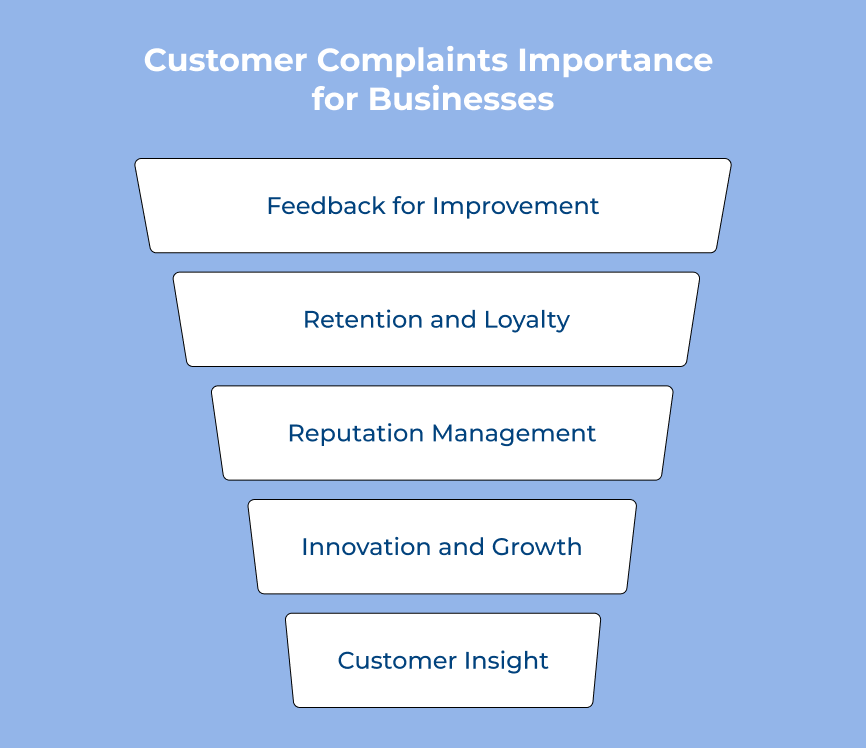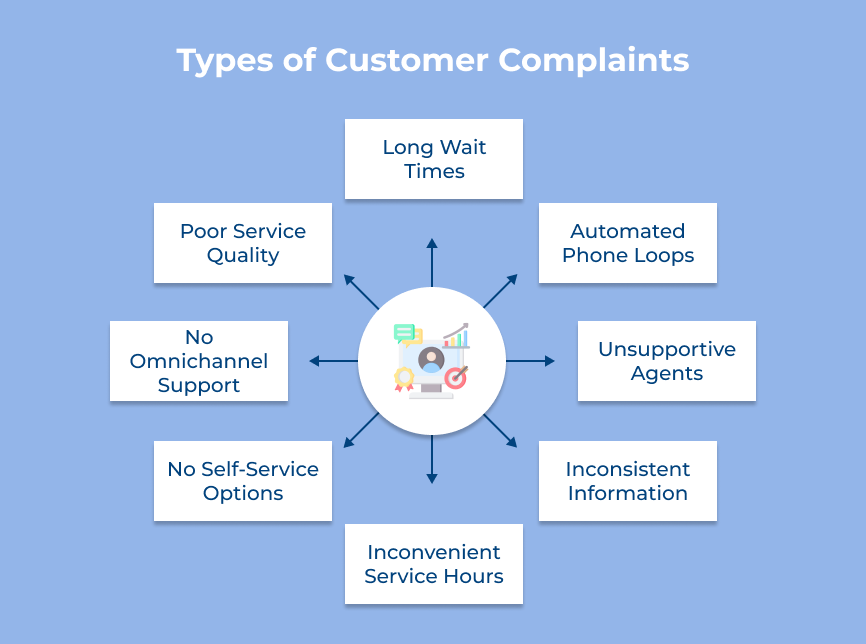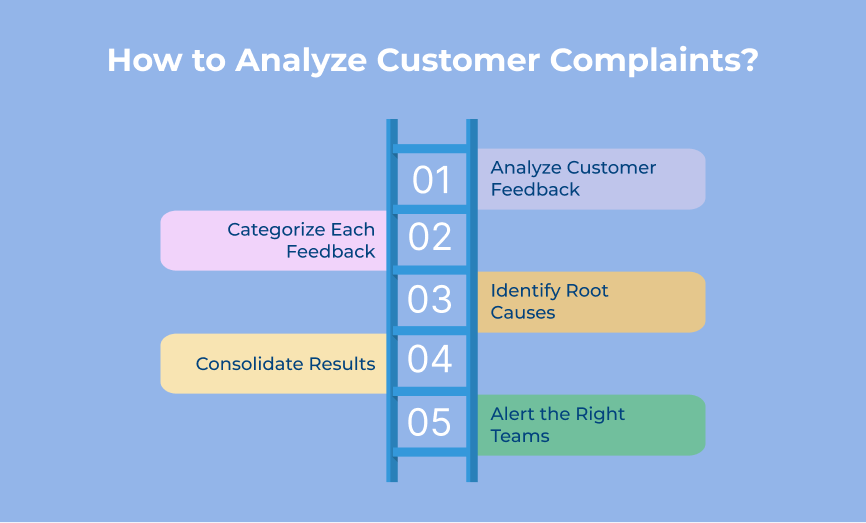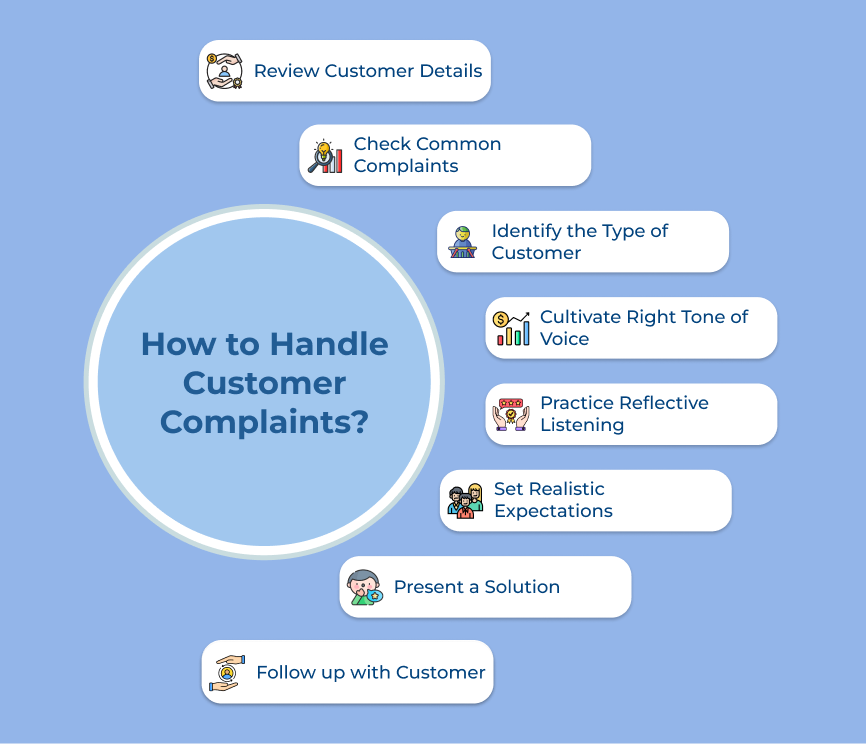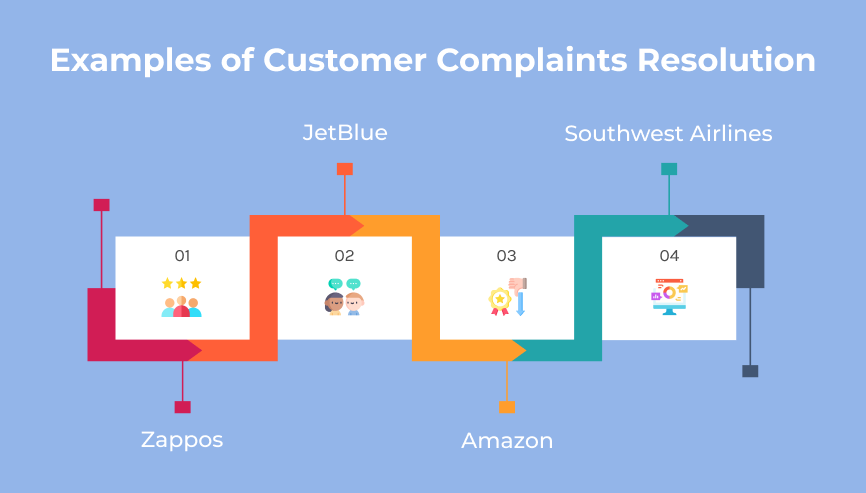1. Review Key Customer Details
Reviewing key customer details is an essential step in handling customer complaints effectively. The step involves carefully examining all information related to the customer. It can involve their purchase history, communication history, preferences and any past complaints.
Following up with the customer helps in handling complaints by demonstrating that the company is proactive in resolving issues. Businesses can also use it as an opportunity to further address any remaining issues which will help them deliver a more positive experience.
Pro tips:
- Take thorough notes during each customer interaction to ensure all relevant details are captured.
- Use a customer relationship management (CRM) system to track and analyze customer data for better insights.
- Train your customer service team to prioritize reviewing key customer details before responding to complaints to provide a more personalized resolution.
2. Check Common Complaints
Handling customer complaints is an important part of any business, as it can have a direct impact on customer satisfaction and loyalty. One key step in the process of handling client complaints is to check common complaints. Identifying common complaints can prevent future issues and improve customer experience.
Checking common complaints involves analyzing feedback from customers to determine recurring issues or trends. It is crucial to understand the root causes of complaints and implement changes to prevent similar problems in the future. Let’s consider that a company receives numerous complaints about slow response times. It can take steps to improve its process and decrease response times.
Best practices:
- Keep track of customer feedback and complaints to identify patterns.
- Implement systems to quickly address and resolve common complaints to demonstrate proactive customer service.
3. Identify the Type of Customer You’re Dealing With
Identifying the type of customer you’re dealing with is a crucial step in effectively handling complaints. Understanding the different types of customers can help tailor your approach to best meet their needs and resolve any issues they may have.
Main types of customers that you may encounter:
- The angry customer: Frustrated and may need reassurance that their concerns are being taken seriously.
- The indecisive customer: May need more information and guidance to make a decision.
- The impatient customer: They want quick resolutions and may not be willing to wait long for assistance.
- The understanding customer: Willing to listen and work with you to find a solution.
- The stubborn customer: The ones that are firm in their beliefs and may be resistant to change.
Imagine that a customer has received a faulty product and contacts your customer service department for a refund. Identifying that they are an angry customer can help handle the situation with empathy, reassuring them that their concerns are being addressed promptly.
How to handle:
- Practice active listening to truly understand the customer’s concerns.
- Offer personalized solutions that cater to the specific needs of each customer type.
4. Cultivate the Right Tone of Voice
Cultivating the right tone of voice is a crucial step in handling customer complaints effectively. The tone of voice you use can greatly impact how the customer perceives your response. It can determine whether or not they are satisfied with the resolution.
Let’s consider that a customer is upset about receiving a damaged product. Responding with a sympathetic tone can help reassure them that their concerns are being taken seriously. It can lead to a more amicable resolution and potentially turn a dissatisfied customer into a loyal one.
Ways to implement:
- Start by empathizing with the customer’s situation and acknowledging their frustration.
- Use positive language and avoid defensive or confrontational responses.
- Offer a solution or compensation politely and respectfully to show that you are committed to resolving the issue satisfactorily.
5. Practice Reflective Listening
Practising reflective listening is a crucial step in handling customer complaints effectively. It involves actively listening to the customer, reflecting on what they have said and showing empathy. It helps in understanding the issue accurately and shows the customer that you care about their feelings.
One key way reflective listening helps in handling client complaints is by creating a sense of validation for the customer. When they feel heard and understood, they are more likely to trust that their concerns will be addressed. Reflective listening can help diffuse potentially tense situations by showing the customer that their perspective is being acknowledged.
Pro tips:
- Repeat back the customer’s concerns to show that you have understood them correctly.
- Ask clarifying questions to gain a deeper understanding of the issue.
- Show empathy by acknowledging the customer’s emotions and expressing a genuine desire to help resolve the problem.
6. Set Realistic Expectations
Setting realistic expectations is a crucial step in effectively handling customer complaints. You minimize the chances of disappointment by clearly outlining what customers can expect from your offerings. It helps in managing customer expectations and in building trust with your customer base.
Let’s assume that you promise a customer to resolve the issue within 3 days. Make sure that you can resolve it. If there are any delays, communicate it with the customer as soon as possible and offer a solution to compensate for the inconvenience.
Best practices:
- Communicate what customers can expect from your product or service, including any potential limitations or delays. It will help manage their expectations and prevent misunderstandings.
- Set realistic expectations by promising only what you know you can deliver. You have room to exceed their expectations and leave a positive impression.
- If there are any unforeseen delays, keep your customers informed through regular updates. It shows that you are proactive and committed to resolving the issue on time.
7. Present a Solution
Handling consumer complaints is an inevitable part of running a business. The way you respond can make all the difference in maintaining customer loyalty. Presenting a solution is a key step in effectively dealing with consumer complaints.
One example of presenting a solution in customer service is a customer who receives a damaged product. The representative can apologize for the inconvenience, offer a replacement and ensure that the customer receives the new product on time.
Best practice:
- Act promptly: Respond to customer complaints promptly to show that you take their concerns seriously.
- Offer options: Provide customers with alternative solutions to choose from, such as a refund, replacement, or store credit.
8. Follow up With the Customer
One crucial step in handling client complaints effectively is following up with the customer. The step involves reaching out to the customer after their initial complaint has been addressed. It helps to ensure their satisfaction and to show that their feedback is valued.
Following up with the customer helps in handling complaints by demonstrating that the company is proactive in resolving issues. It also provides an opportunity to further address any remaining issues, leading to a more positive experience.
Ways to implement:
- Send a personalized email thanking the customer for their feedback and providing any updates on the resolution of their complaint.
- Give the customer a call to ensure that they are satisfied with the solution provided and to address any further concerns they may have.
- Offer a small token of appreciation, such as a discount or a freebie, as a way to show gratitude for their feedback and to encourage their continued loyalty.
Examples of Customer Complaints Resolution
Check out the real-life examples of successful customer complaints resolution strategies that have helped renowned companies enhance customer trust and loyalty.






